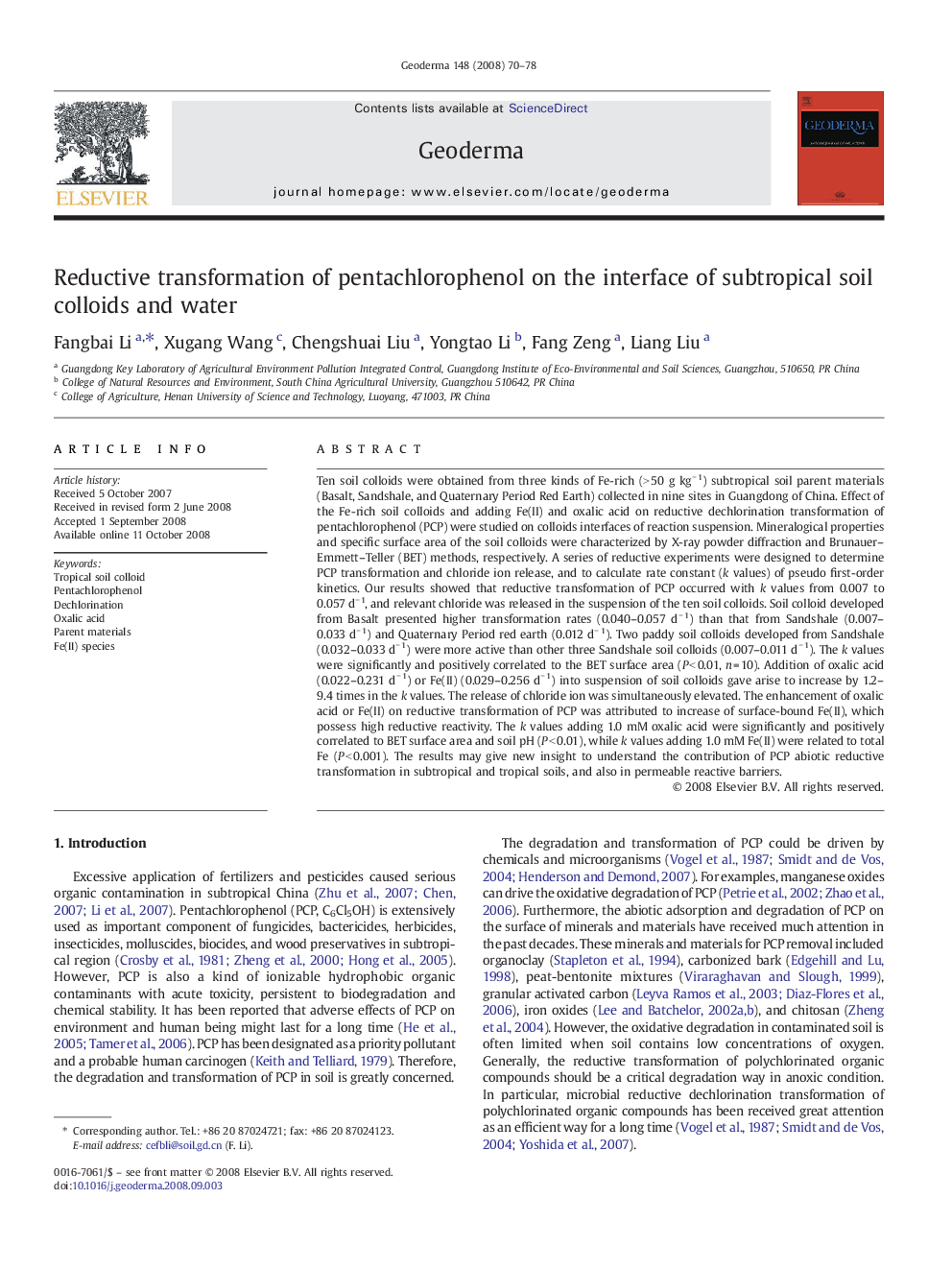| Article ID | Journal | Published Year | Pages | File Type |
|---|---|---|---|---|
| 4574784 | Geoderma | 2008 | 9 Pages |
Ten soil colloids were obtained from three kinds of Fe-rich (> 50 g kg− 1) subtropical soil parent materials (Basalt, Sandshale, and Quaternary Period Red Earth) collected in nine sites in Guangdong of China. Effect of the Fe-rich soil colloids and adding Fe(II) and oxalic acid on reductive dechlorination transformation of pentachlorophenol (PCP) were studied on colloids interfaces of reaction suspension. Mineralogical properties and specific surface area of the soil colloids were characterized by X-ray powder diffraction and Brunauer–Emmett–Teller (BET) methods, respectively. A series of reductive experiments were designed to determine PCP transformation and chloride ion release, and to calculate rate constant (k values) of pseudo first-order kinetics. Our results showed that reductive transformation of PCP occurred with k values from 0.007 to 0.057 d− 1, and relevant chloride was released in the suspension of the ten soil colloids. Soil colloid developed from Basalt presented higher transformation rates (0.040–0.057 d− 1) than that from Sandshale (0.007–0.033 d− 1) and Quaternary Period red earth (0.012 d− 1). Two paddy soil colloids developed from Sandshale (0.032–0.033 d− 1) were more active than other three Sandshale soil colloids (0.007–0.011 d− 1). The k values were significantly and positively correlated to the BET surface area (P < 0.01, n = 10). Addition of oxalic acid (0.022–0.231 d− 1) or Fe(II) (0.029–0.256 d− 1) into suspension of soil colloids gave arise to increase by 1.2–9.4 times in the k values. The release of chloride ion was simultaneously elevated. The enhancement of oxalic acid or Fe(II) on reductive transformation of PCP was attributed to increase of surface-bound Fe(II), which possess high reductive reactivity. The k values adding 1.0 mM oxalic acid were significantly and positively correlated to BET surface area and soil pH (P < 0.01), while k values adding 1.0 mM Fe(II) were related to total Fe (P < 0.001). The results may give new insight to understand the contribution of PCP abiotic reductive transformation in subtropical and tropical soils, and also in permeable reactive barriers.
